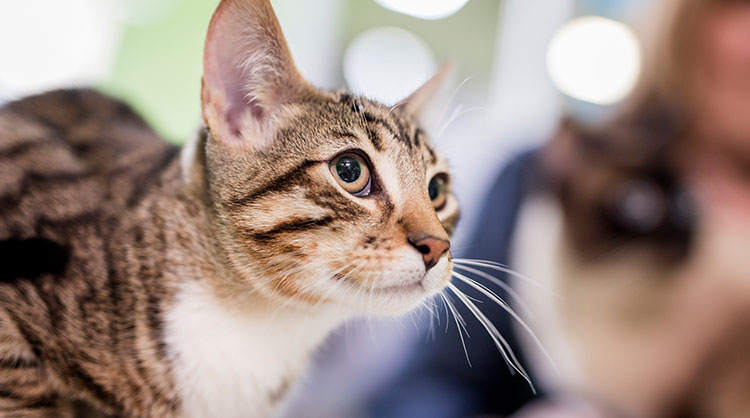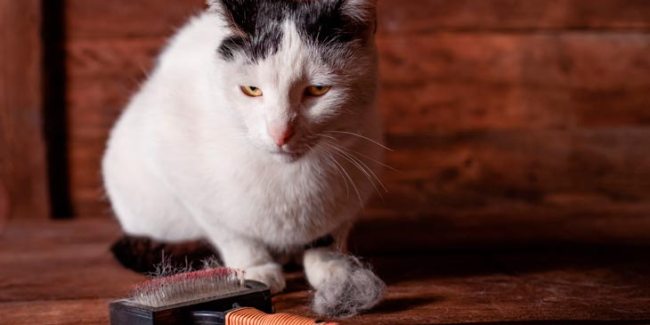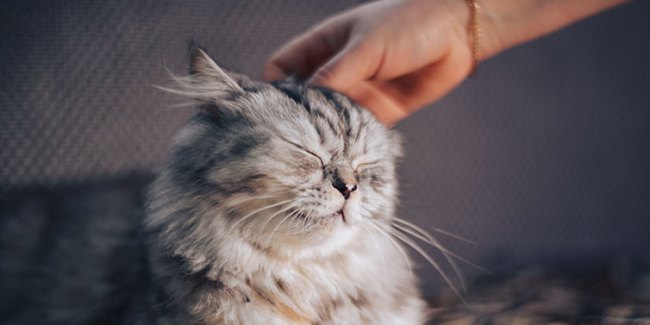Cat Care 101: When Should Your Cat Visit the Vet?
Your beloved feline needs more than regular feeding and TLC. Routine cat medical care and vaccinations are essential to keep your kitty in tip-top condition.
CATS

Posted by bravectosouthafrica – 28 November 2019
Give Your Feline Friend a Boost with Quality Cat Care
Adopting a kitty is the start of a loving relationship filled with furry cuddles, playful scratches and, at times, curtain climbs. However, caring for your cat goes beyond your household. Forego health complications and cat stress later in life by taking your cat to the vet regularly.

Kitten Vet Visits
Did you know that kittens receive antibodies from their mother’s milk that protect them from infectious diseases? Alas, this protection doesn’t last forever. As kittens age, their immunity weakens and they need help from kitten vaccinations to fend off harmful bacteria and viruses.
Vaccinate your kitten as soon as possible – once they’re between 8-9 weeks old. After the initial round of vaccinations, your kitty will have to return to the vet for their monthly or annual boosters.
Core and Suggested Cat Vaccinations
Cats are often exposed to viral or bacterial infections, that’s why veterinarians prescribe essential vaccinations to limit the risk of severe cat illnesses. Some vaccines require multiple doses a few weeks, months or even years apart. Ask your vet what vaccination plan is best suited to your pet.
Your cat could be at an increased risk of contracting a disease if it is a kitten, goes outdoors, interacts with other cats or shares a house with other pets. Whatever the case, vaccination is imperative.
Core Vaccinations:
- Feline Panleukopenia aka Feline Distemper (FPV)
- Feline Herpesvirus aka Viral Rhinotracheitis (FHV)
- Feline Calicivirus (FCV)
- Rabies
Additional Cat Vaccinations:
- Feline Leukaemia Virus (FeLV)
- Bordetella bronchiseptica
- Chlamydia felis
Chat to your veterinarian about microchipping, spaying or neutering options, as well as tick, flea and ear mite control.

Annual Check-Ups – Cat Care
Concealing pain or illness is a cat’s forte. Their cryptic behaviour forms part of their survival instinct – they disguise symptoms or hideaway to protect themselves when they are vulnerable. This makes spotting sickness in your cat difficult. Luckily, if the vet conducts a thorough annual head-to-tail exam, they can detect health changes and treat any problems early on.
Senior kitties (cats seven years and older) may require special cat care. Regular vet visits could limit unforeseen health complications associated with ageing. Chat to your vet to find out what your elderly cat may need to keep them fit and healthy during their golden years.

Common Signs of Illness or Pain in Cats
If your cat exhibits changes in its normal behaviour or unusual symptoms, like those listed below, contact your vet ASAP.
- Vomiting or diarrhoea
- Howling or excessive meowing
- Excessive grooming or licking
- Inappropriate elimination
- Runny nose or eyes, coughing or sneezing
- Increase or decrease in appetite or thirst
- Localised hair loss

5 Tips to Make Vet Trips Fuss-free
A vet visit can be a traumatic experience for your cat, and, frankly, for you too. A few minutes of preparation could make the outing as anxiety-free as possible for both of you. Here are five tips to help get Kitty to the vet – stress-free!
- Book your cat’s appointment during the quietest time of the day.
Ask the vet’s office to book your cat’s visit when they’re least busy. - Introduce your cat to the pet carrier before the vet appointment.
Place the carrier near where your cat likes to relax, keep the carrier door open and put a snack or two inside. This way your cat can explore the carrier on their terms. - Make the carrier comfortable.
Line the carrier’s inside with their favourite blanket. However, don’t cramp the carrier with something b big – it’ll make your cat feel uneasy. - Use a towel or cloth to cover the cat carrier.
Limit your cat’s exposure to stress-inducing sights in the vet’s waiting room by covering their carrier. - Keep the carrier closed until you’re in the exam room.
Avoid accidents and stress spikes by keeping your cat in the carrier until it’s safe for them to come out.
Adding regular vet visits to your cat’s routine will complement the general cat care they receive at home. While at home, ensure that your pets are pest-free to protect them from tick- or flea-borne diseases. Try Bravecto® Spot-On for Cats to shield your pet from tiny threats.
Subscribe to our Newsletter
Get to know your furry friend better! Sign up for all things dog- or cat-related.
The Hairy Facts about the dreaded hairball
12 April 2021
Help! My dog’s barking mad! Volume 2
12 April 2021
Your Itchy, Scratchy Cat – All About Cat Skin Problems
12 April 2021
The Dog’s Diet: A Bone of contention?
01 April 2021
Mango Fly Worms: How to Spot and Eliminate them
Posted on November 28,2019
Managing Mange And Mites In Your Dog
Posted on June 11,2018
Why Do Cats Purr and How? Learn What Your Cat Is Saying
Posted on October 14,2020
How to Get Rid of Ear Mites in Dogs
Posted on November 06,2019









